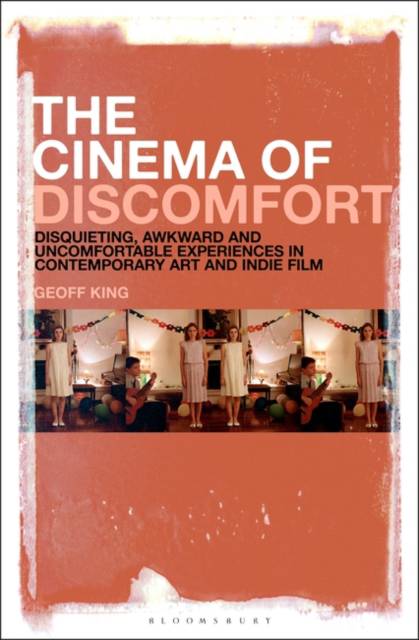
Je cadeautjes zeker op tijd in huis hebben voor de feestdagen? Kom langs in onze winkels en vind het perfecte geschenk!
- Afhalen na 1 uur in een winkel met voorraad
- Gratis thuislevering in België vanaf € 30
- Ruim aanbod met 7 miljoen producten
Je cadeautjes zeker op tijd in huis hebben voor de feestdagen? Kom langs in onze winkels en vind het perfecte geschenk!
- Afhalen na 1 uur in een winkel met voorraad
- Gratis thuislevering in België vanaf € 30
- Ruim aanbod met 7 miljoen producten
Zoeken
The Cinema of Discomfort
Disquieting, Awkward and Uncomfortable Experiences in Contemporary Art and Indie Film
Geoff King
Paperback | Engels
€ 67,95
+ 135 punten
Uitvoering
Omschrijving
How do we understand types of cinema that offer experiences of discomfort, awkwardness or disquieting uncertainty? This book examines a number of examples of such work at the heart of contemporary art and indie film. While the commercial mainstream tends to offer comforting viewing experiences - or moments of discomfort that exist largely to be overcome - The Cinema of Discomfort analyses films in which discomfort is offered in a sustained manner. Cinema of this kind confronts us with material such as distinctly uncomfortable sexual encounters. It invites us into uncertain relationships with awkward and sometimes unlikable characters. It presents us with challenging behaviour or what are presented as uncomfortable realities. It often refuses information on which to base judgments. More discomfortingly, cinema of this kind tends to provoke uncertainty at the level of what emotional responses we are encouraged to have towards difficult, sometimes controversial, characters or events.
The Cinema of Discomfort examines a number of case-studies, including Palindromesby Todd Solondz (US) and Dogtoothfrom Yorgos Lanthimos (Greece), along with other examples from Austria, Sweden, the UK, the US and Germany. Offering close textual analysis of the manner in which discomfort is generated, it also asks how we should understand the appeal of such work to certain viewers and how the existence of films of this kind can be explained, as products of both their socio-cultural context and the more particular institutional realms of art and indie film.
The Cinema of Discomfort examines a number of case-studies, including Palindromesby Todd Solondz (US) and Dogtoothfrom Yorgos Lanthimos (Greece), along with other examples from Austria, Sweden, the UK, the US and Germany. Offering close textual analysis of the manner in which discomfort is generated, it also asks how we should understand the appeal of such work to certain viewers and how the existence of films of this kind can be explained, as products of both their socio-cultural context and the more particular institutional realms of art and indie film.
Specificaties
Betrokkenen
- Auteur(s):
- Uitgeverij:
Inhoud
- Aantal bladzijden:
- 304
- Taal:
- Engels
Eigenschappen
- Productcode (EAN):
- 9781501385735
- Verschijningsdatum:
- 20/04/2023
- Uitvoering:
- Paperback
- Formaat:
- Trade paperback (VS)
- Afmetingen:
- 152 mm x 229 mm
- Gewicht:
- 399 g

Alleen bij Standaard Boekhandel
+ 135 punten op je klantenkaart van Standaard Boekhandel
Beoordelingen
We publiceren alleen reviews die voldoen aan de voorwaarden voor reviews. Bekijk onze voorwaarden voor reviews.









